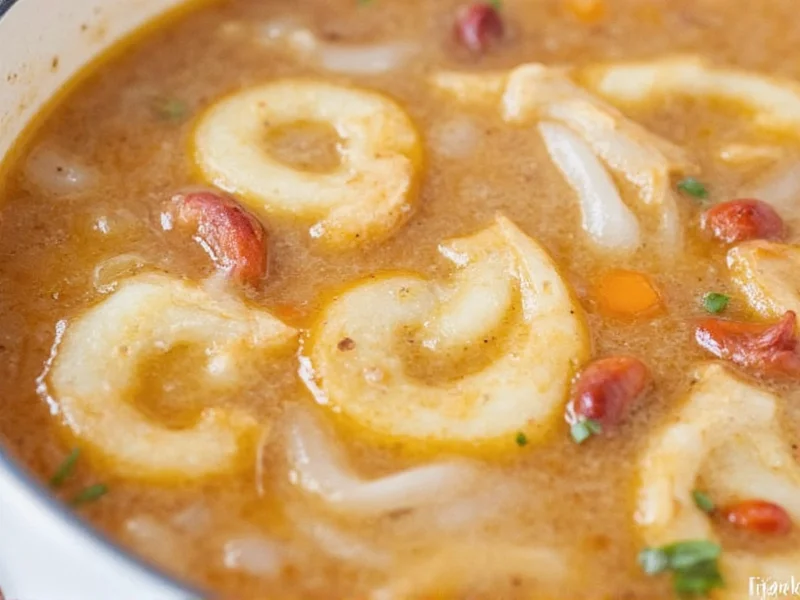When crafting the perfect French onion soup, onion selection isn't just important—it's foundational to the entire dish. The magic of French onion soup happens during the caramelization process, where onions transform from sharp and pungent to sweet, complex, and deeply savory. This transformation depends critically on choosing the right onion variety with optimal sugar content and sulfur compounds.
The Science Behind Onion Selection
Understanding why certain onions work better than others requires examining their chemical composition. Onions contain natural sugars (fructose, glucose, and sucrose) and sulfur compounds that determine both flavor profile and caramelization behavior. The ideal French onion soup onion needs:
- 4-6% sugar content for proper caramelization
- Moderate sulfur levels to balance sweetness with depth
- Firm texture that holds up during long cooking
- High glutamate content for umami development
Onion Varieties Compared for French Onion Soup
| Onion Type | Sugar Content | Caramelization Quality | Flavor Profile | Best Usage Recommendation |
|---|---|---|---|---|
| Yellow Onions | 4-5% | Excellent (deep golden brown) | Perfect sweet-pungent balance | Ideal primary onion (100% of recipe) |
| Vidalia/Sweet Onions | 6-8% | Good (browns quickly) | Sweet with mild pungency | Maximum 50% of total onions |
| Red Onions | 5-6% | Fair (color affects appearance) | Sharp with metallic notes | Not recommended |
| White Onions | 3-4% | Poor (stays pale) | Sharp, pungent | Avoid for traditional recipes |
| Shallots | 7-9% | Excellent but burns easily | Delicate, complex | Up to 25% for flavor enhancement |
Why Yellow Onions Reign Supreme
Yellow onions (often labeled as Spanish onions in markets) contain the precise chemical composition needed for authentic French onion soup. Their 4-5% sugar content provides enough natural sweetness to caramelize beautifully over 45-60 minutes of slow cooking, while their moderate sulfur compounds develop the complex umami flavors that define the dish.
Professional chefs consistently choose yellow onions because they deliver consistent results. When properly caramelized, yellow onions develop approximately 200 flavor compounds through the Maillard reaction and caramelization processes—nearly double the complexity of sweet onions. This chemical transformation creates the rich, savory-sweet foundation that makes French onion soup so beloved.
Practical Selection and Preparation Tips
Not all yellow onions are created equal. For the best results in your French onion soup:
- Choose firm, heavy-for-their-size onions with dry, papery skins—avoid any with soft spots or green sprouts
- Opt for medium-sized onions (2-3" diameter) which typically have the best sugar-to-water ratio
- Store onions in a cool, dark place (not the refrigerator) to preserve their natural sugars
- Cut onions pole-to-pole (with the grain) to maintain cell structure for better caramelization
- Use a combination of butter and oil (3:1 ratio) for optimal caramelization temperature control
Avoiding Common Onion Mistakes
Many home cooks undermine their French onion soup by making these preventable errors:
- Using exclusively sweet onions—while tempting, their high water content (8-10% more than yellow onions) prolongs cooking time and can create a mushy texture
- Turning heat too high—proper caramelization requires patience at medium-low heat (300-325°F) to develop flavors without burning
- Not salting early enough—adding salt in the first 10 minutes draws out moisture and accelerates the caramelization process
- Disturbing onions too frequently—allow onions to sit undisturbed for 5-7 minute intervals to develop proper fond
- Using old onions—onions stored longer than 2 months lose up to 30% of their natural sugars, affecting caramelization
Professional Chef Techniques
Master French onion soup makers employ these advanced techniques for exceptional results:
- The two-stage caramelization method: Cook onions partially, deglaze with white wine, then continue caramelizing for deeper flavor complexity
- Adding a pinch of baking soda (1/16 teaspoon per pound of onions) raises pH slightly, accelerating caramelization without burning
- Using a combination of onions: 75% yellow onions with 25% shallots creates nuanced flavor while maintaining proper texture
- The "onion weight" measurement: Professional recipes specify by weight (1.5-2 pounds per serving) rather than count for consistent results
When Substitutions Become Necessary
If yellow onions aren't available, understanding proper substitutions is crucial. Sweet onions like Vidalias can work but require adjustments—reduce cooking liquid by 25% to compensate for higher water content, and monitor carefully as they caramelize 20-30% faster. White onions lack sufficient sugar for proper caramelization and will yield a noticeably sharper, less complex broth. Red onions introduce unwanted color and metallic notes that disrupt the traditional flavor profile.
Seasonal Considerations
Onion quality varies throughout the year. Late summer through fall offers the freshest, sweetest yellow onions as new crops come to market. Winter and early spring onions tend to be drier with more concentrated flavor—ideal for French onion soup as they caramelize more efficiently. Avoid using onions stored beyond their peak season (typically 4-6 months after harvest) as they lose up to 40% of their natural sugars, compromising caramelization.











 浙公网安备
33010002000092号
浙公网安备
33010002000092号 浙B2-20120091-4
浙B2-20120091-4